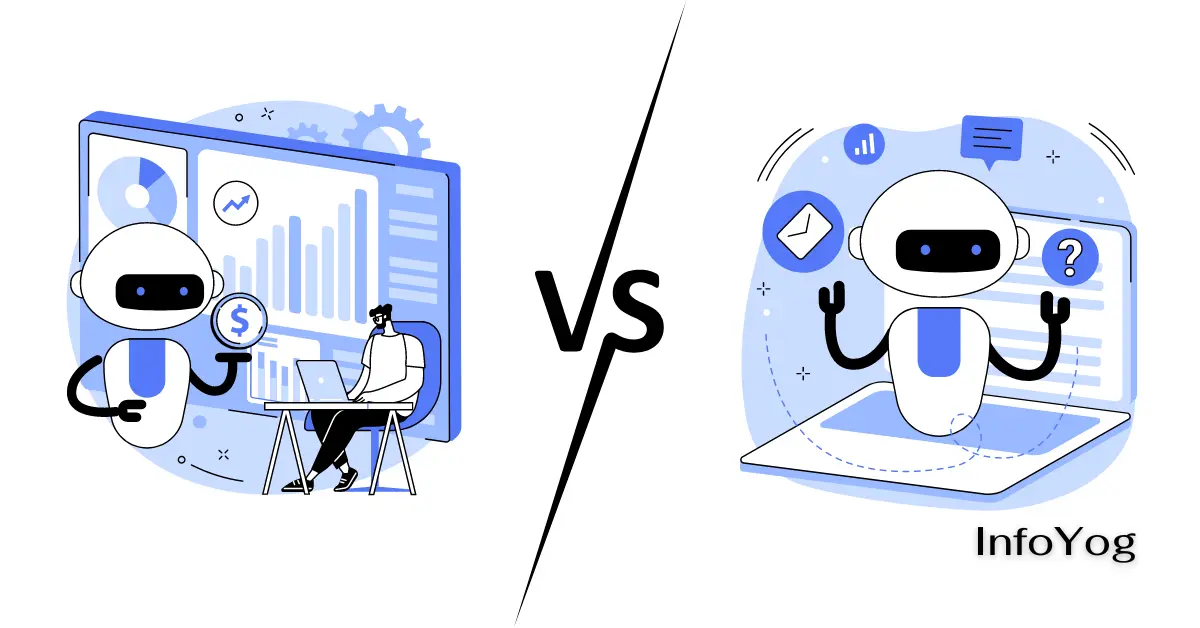Table of Contents
In this article we will delve deeper into a comparative analysis on the two major branches within Artificial Intelligence (AI) by exploring the comparison of Generative AI vs Conversational AI.
Overview
Artificial Intelligence (AI) has made significant strides in various domains, giving rise to diverse applications that serve different purposes. Two prominent branches within AI are Generative AI and Conversational AI. While both are part of the same overarching field, they serve distinct purposes and employ different techniques. In this comprehensive guide, we’ll explore the differences, similarities, and applications of Generative AI and Conversational AI.
Understanding Generative AI
Generative AI, as the name suggests, revolves around generating new content, such as text, images, music, and more. This is achieved by training models on large datasets to recognize patterns and relationships within the data. These models then use these patterns to create entirely new content that fits the learned styles.
Generative AI finds its applications in art generation, content creation, and even storytelling. It enables artists, writers, and musicians to explore new horizons and push the boundaries of creativity.
Understanding Conversational AI
Conversational AI, on the other hand, focuses on simulating human-like conversations through text or speech. The primary goal is to create intelligent systems that can understand user inputs, generate contextually relevant responses, and engage in interactive dialogue.
Conversational AI has a wide range of applications, including customer support chatbots, virtual assistants like Siri and Alexa, and even companionship for people who may feel isolated.
Generative AI vs Conversational AI
Let’s delve into a detailed comparison between Generative AI and Conversational AI:
| Aspect | Generative AI | Conversational AI |
|---|---|---|
| Definition | Creates content (text, images, music, etc.) from scratch based on patterns and data. | Focuses on simulating human-like conversation and interaction through text or speech. |
| Main Goal | Content generation and creativity. | Enhancing human-like interactions and responses. |
| Application | Art generation, text completion, content creation. | Chatbots, virtual assistants, customer support. |
| Primary Function | Creativity, content synthesis. | Interaction, understanding, response generation. |
| Data Usage | Trained on large datasets of various content types. | Trained on conversational datasets and dialogues. |
| Training Process | Unsupervised learning, often using GANs or VAEs. | Supervised learning, reinforcement learning. |
| Example Algorithms | OpenAI’s DALL-E, MuseNet. | Google’s Dialogflow, IBM’s Watson Assistant. |
| Output | Images, text, music, and more. | Text or speech responses in conversations. |
| Challenges | Lack of control over output, coherence issues. | Context understanding, maintaining context. |
| Ethical Concerns | Potential for generating fake content. | Bias in responses, privacy concerns. |
| Use Cases | Art generation, content creation, storytelling. | Customer service, virtual companions. |
| Realism | Can produce highly creative but unrealistic content. | Aims for human-like and contextually relevant responses. |
| Interactivity | Limited, as it’s primarily a one-way generation process. | Dynamic and interactive, responds to user inputs. |
| Human Involvement | Often used as a creative tool by humans. | Designed to minimize human intervention. |
| Learning Capacity | Can learn patterns and styles but lacks understanding. | Can learn context, intent, and adapt over time. |
| Personalization | Limited personalization without specific training. | Can be personalized based on user interactions. |
| Research Focus | Creativity, content synthesis advancements. | Natural language understanding, context management. |
| Examples | Generating art, writing stories, composing music. | Chatbots answering queries, virtual assistants. |
| Famous Models | GPT-3, DALL-E, VQ-VAE-2. | BERT, Dialogflow, Alexa, Siri. |
Conclusion
Generative AI and Conversational AI represent two distinct aspects of artificial intelligence, each serving unique purposes. Generative AI focuses on creating novel content and promoting creativity, while Conversational AI aims to mimic human interactions and foster engagement through dynamic conversations. As AI technology continues to advance, the boundaries between these two domains might blur, leading to more versatile and sophisticated AI systems that combine elements of both. Understanding these differences is essential for leveraging AI effectively across various applications and industries.

